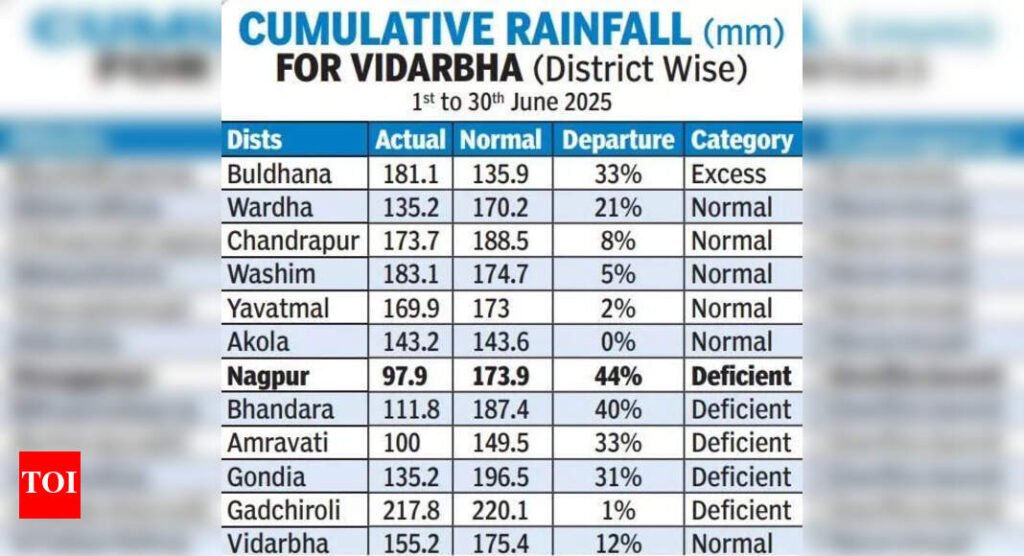Nagpur: The month-end heavy rain across districts left Vidarbha with an overall deficiency of 12% in the normal range, though in some parts like Nagpur, the shortfall was as high as 44% in June. Besides Nagpur, three other districts — Amravati, Bhandara, and Gondia — remained rain-deficient in June.Nagpur recorded 45.6mm rainfall till 8.30pm on Monday. This is highest single day rainfall of this June in the city. Meanwhile, widespread moderate to heavy rainfall have been forecast over Nagpur, Bhandara and Amravati for Tuesday.Nagpur district witnessed 10 rainy days in June, leaving it with 97.9mm total rainfall against a normal of 173mm. This was followed by Bhandara (40%), Amravati (33%), and Gondia (31%). Only Buldhana, with 181.1mm rainfall, received 33% excess rains. Rest of the districts received normal range category rains. Vidarbha as a whole received 156.2mm rainfall against its normal of 175.4mm.The month also saw the mercury shooting up to 44 degreesC after the onset of the monsoon. On Monday, the India Meteorological Department (IMD), in its monthly outlook, forecast that rainfall over Central India, including Vidarbha, is likely to remain above normal during July.“Maximum temperatures across the region are expected to remain below normal throughout the month. This forecast suggests favourable conditions for agricultural activities and water resource management across the region,” said Dr Rizwan Ahmed, a IMD scientist posted at RMC.Dr Ahmed added that Vidarbha experienced substantial rainfall deficit during June, with cumulative precipitation across most districts falling well below the climatological long-period average (LPA). Although the southwest monsoon arrived earlier than its usual onset, its advancement and intensity weakened significantly across Central India, including Vidarbha.“A key synoptic feature contributing to this anomaly was the lack of any major low-pressure systems over the Bay of Bengal or Arabian Sea that typically move in a westerly or west-northwesterly (WNW’ly) direction. Central India, including Vidarbha, generally receives substantial rainfall when such systems propagate inland and align with monsoon troughs,” Dr Ahmed said.However, no such system tracked westward into the core monsoon zone in June. “Instead, most convective activity either remained confined to coastal regions or moved northeastward, away from the central landmass. This absence of a westward-moving synoptic disturbance suppressed rainfall activity in Vidarbha despite otherwise favourable upper-level monsoon circulations,” he said.According to Dr Ahmed, the lack of system movement into central India has thus been a critical factor behind the subdued monsoon performance in Vidarbha during June.


